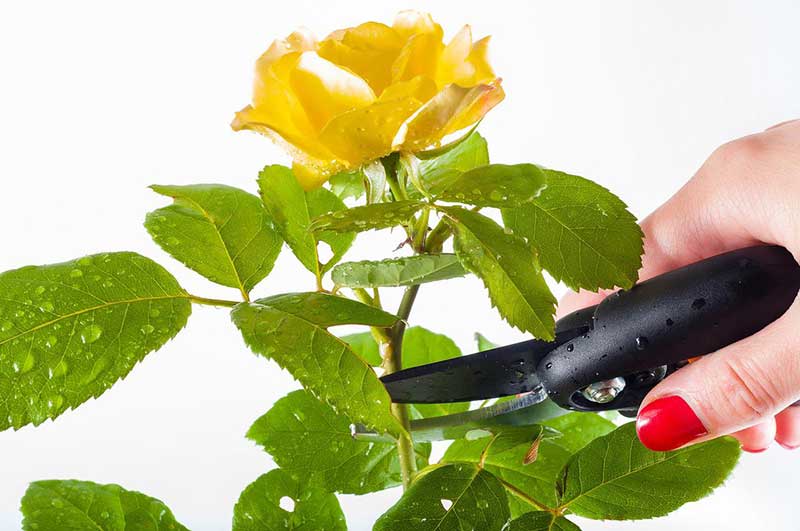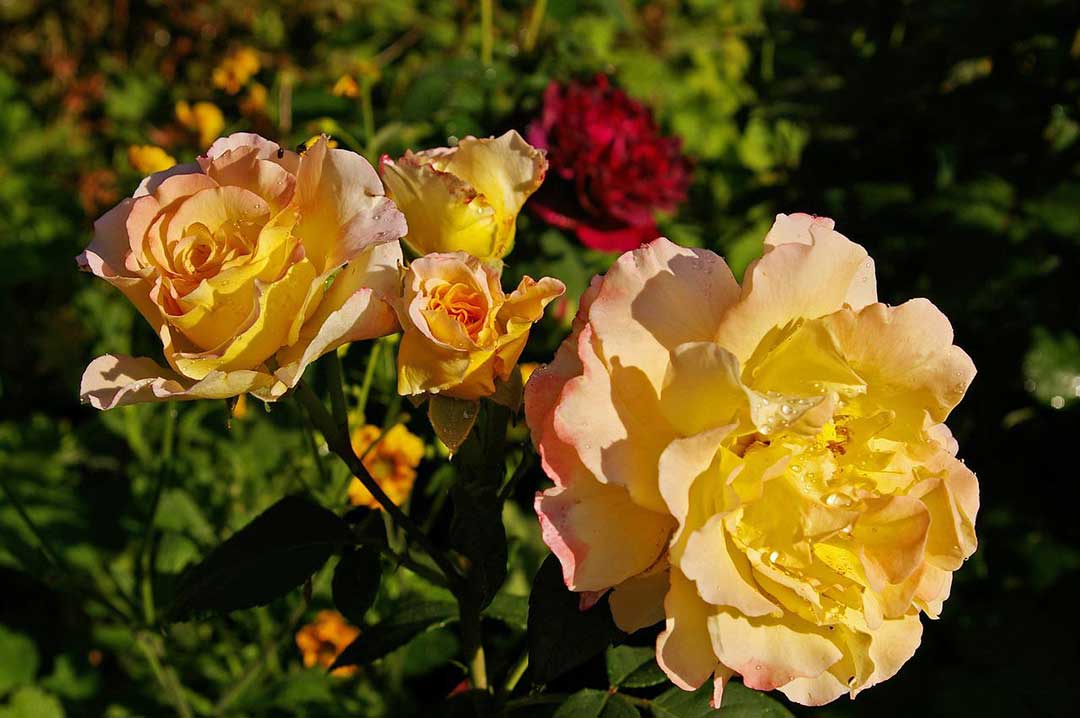how to care for roses
Our Country Bumpkin gardening experts can assist you with all questions about rose care and best practice.
Call 847-566-2176 or Contact Us.

growing guide – how to care for roses
About Roses
Roses are woody perennials growing on stems which we call canes. Besides being famous for their beautiful flowers, they are also well known for their “thorns” – they aren’t actually thorns at all but are prickles (irregularly arranged between nodes on a stem and contain no vascular material).
There are more than 150 species of the genus Rosa in the Rosaceae family. Due to their popularity, there are thousands of cultivars.
These sun loving plants need fertile, well drained soil.
Popular Common Rose Types
Hybrid Tea Roses – These are easily recognizable with their large blooms at the end of the growing stems. They grow upright and can reach heights of about 6 feet. They have ornate blooms of 30 petals and more and create a dazzling display in the garden. Horticulturalists love these and create new varieties all the time.
Shrub Roses – Shrub roses and bush roses are really very similar. They tend to have a sprawling habit and are better suited for larger gardens or beds. Shrub roses are probably the easiest to grow and maintain requiring little maintenance. These roses aren’t as showy as the hybrid teas, but they do bloom profusely and often have two or more flushes during the season. Some even flower continually until frost.
Climbing Roses – If you really want to make statement for your walls or trellis these are outstanding plants – be prepared though, they will require maintenance and regular pruning! Flower size ranges from small to large so you can fit your space perfectly. Be sure, in our growing zone, to choose a hardy variety.
Miniature Roses – Miniature roses have been bred to stay small – typically from 15 to 30 inches tall. They come in variety of colors and are very versatile for small spaces, small beds, and containers as a specimen feature. They thrive in full sun with a rich moist soil, and regular fertilizing.
Planting Roses
Where and when to plant – The best time to plant is after the last frost in spring. You can also plant at least 6 to 8 weeks before the first frost in fall – making sure there is enough time for the roots to establish. It is important to pick a spot that gets at least 6 to 8 hours of sun a day – roses will not do well with less than that!
Soil – Roses have deep fibrous roots, and they need to be planted in a deep hole. The ideal soil should be rich in organic matter and compost and have good drainage. If you have clay beds, it’s a good idea to dig out at least two to three feet and fill with good, composted soil.
Most commercially available roses are grafted onto rootstock. You will notice the swollen base of the stem called the bud union that is grafted on. It is important to plant this union area about 2 inches below the soil level. This generally ensures a healthier growing plant – when you see suckers growing out from below the soil level you will know this is from the rootstock; they should be cut and removed.
Pruning Roses
Roses are well adapted to pruning and it is an essential part of their maintenance. Pruning is important to keep them healthy and in shape. They will perform at their best when pruned correctly.
In our area it is best to hard prune them right at the end of the season just as they are going dormant. Keeping only three to five of the strongest, healthiest canes, cut them back to about 8 to 10 inches. Many gardeners cover these canes either with a polystyrene type of container or mulch heaped over them until early April the following season.
During the growing season remove the dead, damaged, and brown canes, and those crossing branches rubbing against one another. Ideally you want the main canes growing at an angle vertically from each other where they get good air circulation and lots of sunlight. When doing maintenance pruning, make a 45 degree angle cut 1/4 to 1/2 inch above a bud eye that faces outward.
Fertilizing Roses
Roses tend to be heavy feeders and regular fertilizing is essential. You can use any commercial rose food or general-purpose fertilizer – apply according to the label instructions. Start feeding them as soon as the first leaves appear in the new growing season and about every six to eight weeks thereafter.
In understanding how to care for roses, it is important to stop feeding your roses about 7 to 8 weeks before the first expected frost. This is to discourage new growth as we want the plant to go completely dormant before winter sets in.

